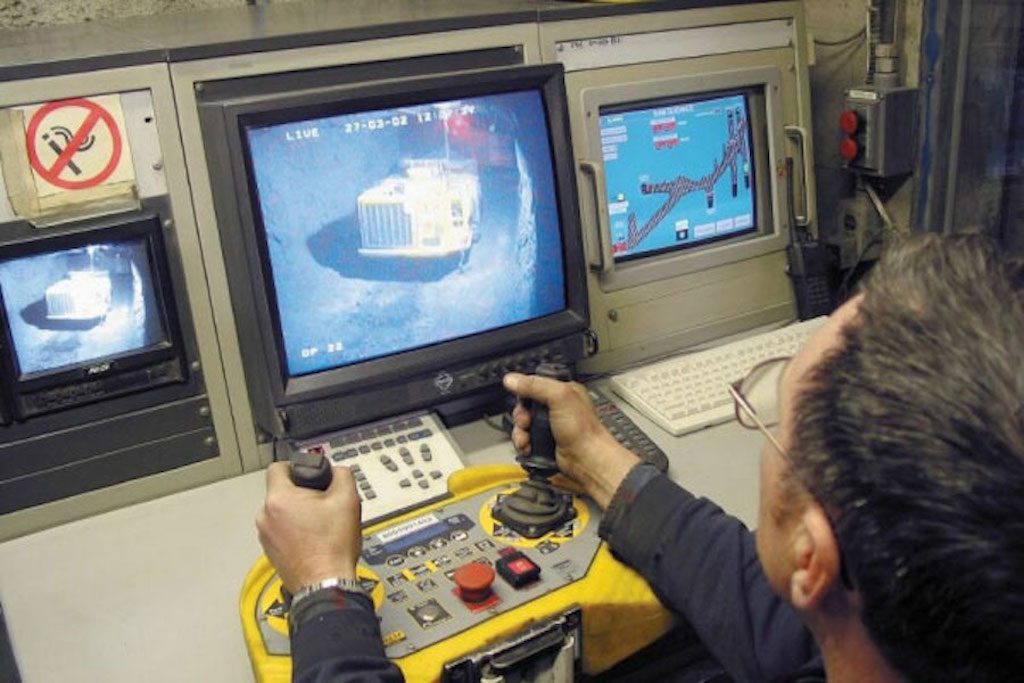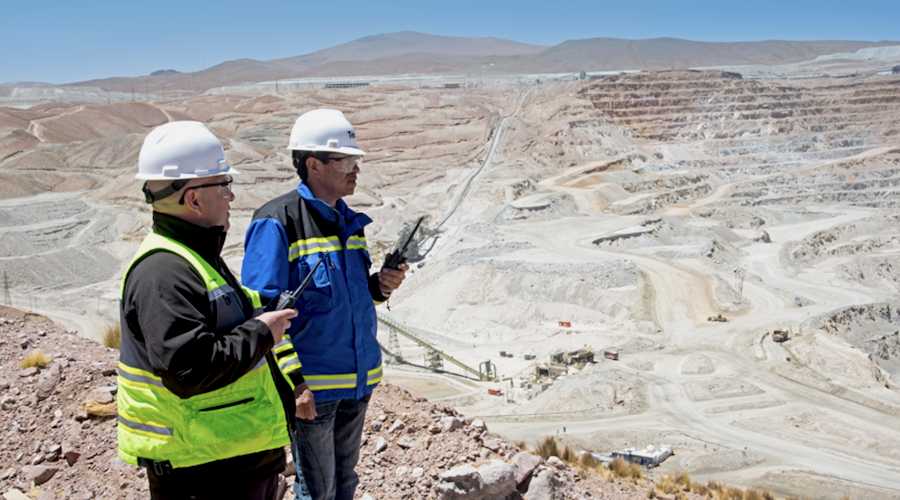The benefits and pitfalls of mining automation

Written by Jessica Black Livingston (Senior Associate), Ann Stanton (Associate), and Andrew Nussbaum (Associate)
Driverless trucks. Conductorless trains. Mines run by cell phone networks. Autonomous technologies such as these are taking miners out of mines, driving efficiency, and changing the way the mining industry operates.
Mining companies across the world are rapidly adopting the latest automation technology to modernize their operations. In four of Rio Tinto’s iron-ore mines in Australia, for example, the company uses 73 driverless trucks to haul iron ore 24 hours a day.[1] Employees oversee the vehicles’ operation from 750 miles away at Rio Tinto’s centralized control center in Perth.
Nearly 8,500 miles to the west, Swedish mine operator Boliden has partnered with cell phone company Ericsson to build an autonomous gold mine.[2] The 5G network Ericsson installed at the site allows the mine’s ventilation system to save 18 megawatts of energy per year, an efficiency gain of 54 percent.
In the United States, Barrick Gold Corporation has partnered with Cisco Systems to integrate wifi sensors in its mines near Elko, Nevada, to track the output of every miner. Barrick is using this and other automated technologies to achieve its goal of lowering production cost to US $700 per ounce of gold.[3]
And in Africa, Randgold Resources and AngloGold Ashanti use robotic loaders 800 meters below the surface in the companies’ joint-venture Kibali Mine to drive output and improve worker safety.[4]
Autonomous technologies have certain benefits that simply cannot be overlooked. Companies that implement automation technologies will quickly realize a significant increase in productivity and a decrease in expenditures. Some companies have seen productivity rise by 15-20 percent as they adopted new technologies.[5]
The industry also will benefit from considerable increases in safety. By using automated equipment that can be maneuvered into unsafe areas and difficult locations, mining companies can send fewer miners underground while extracting a higher output with lower risk to their employees. For example, since implementing autonomous technologies in several of its African mines, Randgold Resources has seen a 29 percent quarter-on-quarter injury rate improvement.[6]
This rapidly shifting landscape is expected to provide substantial value to the mining sector and its stakeholders. One report suggests that the combination of increased productivity and safety with decreased expenses may cause the mining automation market to grow by almost 50 percent in the next six years, reaching US $3.29 billion by 2023.[7]
But these benefits are not without their costs. Automated mining technologies require governments and the mining industry to consider how efficiency gains will change local mining communities. A study issued by the International Institute for Sustainable Development (IISD) forecasts that efficiency gains from automation will reduce the amount that mines contribute to government revenue in low- and middle-income host countries by up to $284 million per country.[8]
Increased automation likely will result in significant GDP decreases in the nations that host mines, as mining companies rely less on fuel and other resources that they typically procure locally. Job loss is also a significant concern. New technologies will create opportunities to retrain workers and employ those with specialized skillsets while reducing the overall number of mine employees, particularly in lower- and middle-income host countries.
Decreased employment in these communities will lead to decreased revenue derived from local spending and personal income taxes.
These forecasts have led local governments and business leaders to begin to rethink how automated technologies and mines fit into local economies. The owners of the Wintergreen Dogsled Lodge in Ely, Minnesota, for example, have suggested that mining communities, which are often located in rural areas, should invest in recreation and tourism to adjust to changes brought by automation.[9]
To account for the diminished benefits from local procurement and employment, local governments may attempt to maximize the value derived from other industries and opportunities that are linked to the mining sector. Shared value can be created, for example, through increased downstream processing of extracted commodities, or through shared use of railway and other infrastructure developed for mining projects.[10] Governments may also seek to impose higher taxes on profits or higher royalties on production. As increased productivity and decreased costs generate higher profits, governments may rely on additional tax and royalty income to replace the lost revenue and local spending that will result from decreased employment in mining communities.
The use of automation technology is quickly accelerating and changing the landscape of the mining industry. The short-term benefits are straightforward: Increased use of automation technology has considerable potential to increase productivity and safety at mines while decreasing expenses, resulting in higher profits throughout the industry. But this rapidly changing reality will also significantly affect the long-term relationship between the mining sector and the communities that host and regulate mines worldwide.
Turning a blind eye to the complexities that automated mining technologies present is not an advisable strategy for mining companies. The industry must consider these long-term realities and relationships to ensure continued innovation and growth for the benefit of both mining companies and their host communities.
[1] Tom Simonite, Mining 24 Hours a Day with Robots, MIT Tech. Rev. (Dec. 28, 2016)
[2] Molly Lempriere, The Minerless Mine: Ericcson’s Kankberg Project Is a Glimpse into the Future of Automation, Mining Tech. (Sept. 24, 2017)
[3] Danielle Bochove, A Digital Reinvention; Barrick’s Plan to Revolutionize Gold-Mining Business Is Taking Place in the Nevada Desert, Financial Post (Nov. 6, 2017)
[4] Martin Creamer, Kibali Africa’s Most Mechanised Gold Mine—Randgold, Creamer Media’s Mining Weekly (Nov. 2, 2017)
[5] Eric Onstad, Robots Under Swedish Forest Breathe Life into Ancient Mines, Reuters (Oct. 4, 2017)
[6] Martin Creamer, Kibali Africa’s Most Mechanised Gold Mine—Randgold, Creamer Media’s Mining Weekly (Nov. 2, 2017)
[7] Mining Automation Market Worth 3.29 Billion USD by 2023, Markets and Markets Inc., (last visited Nov. 2, 2017)
[8] Aaron Cosbey et al., Mining a Mirage? Reassessing the Shared-Value Paradigm in Light of the Technological Advances in the Mining Sector, International Inst. for Sustainable Dev., at viii (Sept. 2016)
[9] Paul & Susan Schurke, Watch out, Ely: Mine Robots Are on the Way, Star Trib. (Oct. 20, 2017)
[10] Cosbey, at 36.
{{ commodity.name }}
{{ post.title }}
{{ post.date }}

Comments